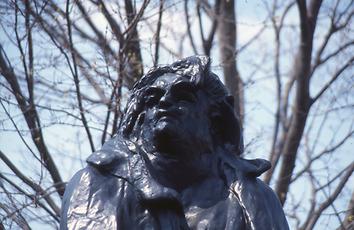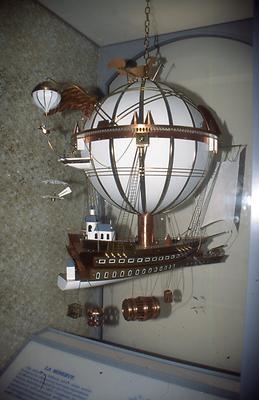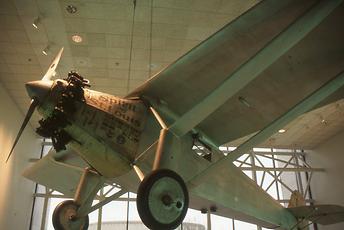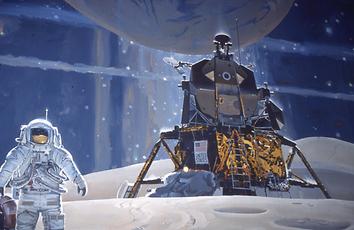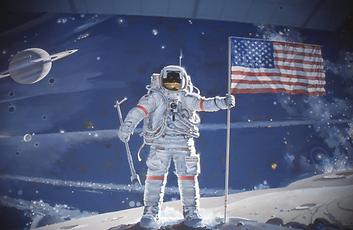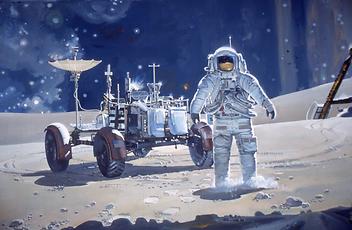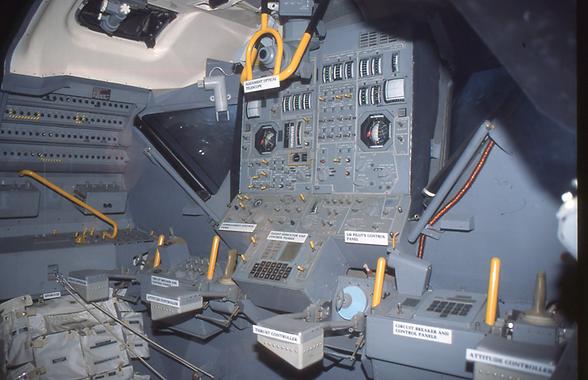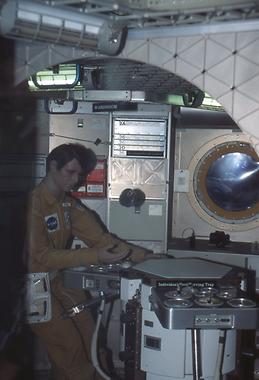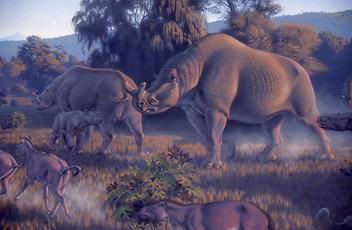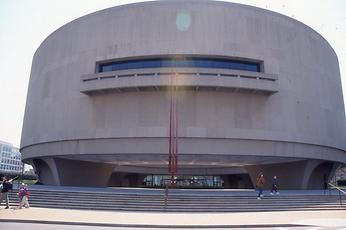The National Mall as cultural centre of the US capital Washington#
Three outstanding museums#
By Günther JontesAll photos were taken by the author 2001 and are part of the archive "Picture-flood Jontes".
Washington D.C. is the capital of the United States. It is not only a city many open and green spaces but also the cultural capital of the USA, particualrly impressing because of its museums. The Smithsonian Institution, an umbrella organization, has a total of 19 museums in Washington, nine of which are situated in the centre of the city at the National Mall. The Mall is a promenade. It is 4.8 km long and 500 m wide and part of the national park National Mall and Memorial Parks. The Mall connects the Capitol and the Lincoln Memorial.
To give an idea of the comprehensive topics of American museums, we will present here a description of three museums which, by the way, rank among the most visited exhibitions in the world. These are the National Museum of Natural History covering nature and mankind, the National Air and Space Museum focusing on aviation and space flight andas third the Hirshhorn Museum and Sculptural Garden with its art of the 20th and 21st centuries.

National Air and Space Museum#
The National Air and Space Museum comprises the world's largest historical aerospace collection on the National Mall in a prominent location right. It was founded as a National Air Museum immediately after the Second World War in 1946. After the victorious defeat of Germany and Japan, the United States had an almost unlimited number of aircraft and weapons of the air war available as spoils of war. The German developments of rockets and jet aircrafts were also the basis for the rapid technical development of the USA which had to pass its first great test in the then following Cold War in Korea.
Among the most visited museums in the world, this museum is been steadily enlarged and amended. With seven million visitors annually it holds the fifth place in the worldwide ranking list of museums. Thematically the subject is not only aerospace and space flight. The field of geophysics is also represented, including the moon and the planets. A large part of the objects are originals.

Observations on the earth cause the desire of mankind to escape into a third dimension for at least some time, like being a bird.
There were no limits to imagination. But even the many ideas that failed involved elements which ultimately led to success.
Even the entrance to the museum is exceptioanl: you enter through a gate the size of a jet engine of a Boeing 747 passenger plane.
Original airplanes are hovering in large high halls, like the once most important transport and passenger airplane Douglas DC 3.



On the site where the museum is located now there was once the arsenal of weapons during the American Civil War. Due to the emergence of space flight the name changed after the foundation in 1946 two times, in 1950 and 1960. Because of the 200th year anniversary celebration of the independence of the United States in 1976, a repositioning took place. At that time the museum was run by Michael Collings who had been to the moon with Apollo 11.
Already ten years after the first flight with a motor-plane the Smithsonian Institution showed the great future of manned flight.
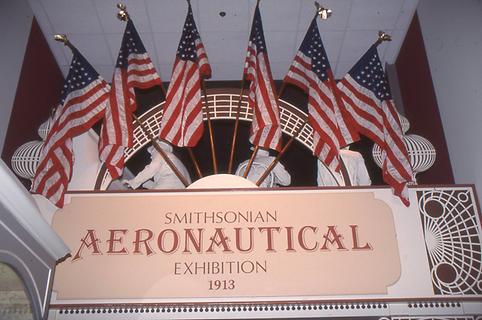




In Asia, the principle of hovering with an upwards draft of air was known a long time before people thought about it in Europe.
On 17th December 1903 in Kitty Hawk, the American brothers Wilbur and Orville Wright were the first to take off to the air with a plane that was heavier than air. The plane was made of wood and covered with canvas. The pilot lay on the lower of the double wings next to the engine, and flew a distance of not even 200 metres.
The steerable gas-filled airship had not disappeared completely from the history of flying. On the contrary, the invention of Count Zeppelin boomed till the thirties, and a passenger service from Europe to America offered unusually high comfort. The catastrophe of Lakehurst on May 6, 1937 in which the German LZ 129 caught fire marked the abrupt end of the airship era. Due to a fire in the hydrogen tanks 36 people were killed.

The American Charles Lindbergh (1902-1974) made special headlines on 20-21 May 1927, when he managed the New York - Paris route in a nonstop flight with his single-engine high-decker "Spirit of St. Louis".
With the Douglas DC 3 plane, passenger and transport flights began to expand at an unexpected level. The first flight of Douglas D 3 took place in 1935. The production of a total of 16,079 pieces is the world’s highest to date for this kind of aircraft. The plane is powered by two Pratt & Whitney double radial machines of 1200 HP per plane, reaches a speed of 300 kilometres per hour and can accommodate up to 35 passengers as a passenger aircraft.
In its military version it carried the main load as a transport machine for the US Air Force. Thus, in the Normandy invasion in 1944, 820 machines were used. In countries of the Third World, the DC 3 was still in use a couple of years ago.
No sooner had the first engine flight by the Wright brothers in 1903 taken place, the aircraft had already become interesting for the military. They started quite slow to give up the principle “lighter in weight than air”. The German air force of the First World War was already well organized. There were reconnaissance aircrafts, fighter aircrafts, and even bombers. The pilots came from different military branches. The main incentive of many pilots was the aspect of adventure. At that time, people like Hermann Göring or the "Red Baron" von Richthofen became real stars who received the highest bravery awards due to their multitude of shooting down aircrafts. For the first time, women were used as workers in the industries of weapons, ammunition and equipment during the First World War.
Europeans consider the portrayal of the bombing against the Great German Empire with mixed feelings. From 1942, thousands of bombers from the US Air Force and the British Bomber Command, starting from England and later from Italy and Malta systematically destroyed not only military objects, weapons and general infrastructure, but in full awareness, withthe intention to break the resistance of the German population, even historic city centres with irreplaceable art treasures.
The psychological effect, however, failed to appear. The population become even more fanatic, and the war industry was shifted to underground where its production continued without restraint. The war continued. Torrents of four-engine bombers, often more than a thousand combined in one group, dropped their loads over Europe. The attacks were shared in such a way that British bombed during the night, while the Air Force used daylight. In doing so, thousands of Allied pilots and crews lost their lives, died in the anti-aircraft fire, or were victims of the German fighter pilots.




Very heavy high explosive bombs, often equipped with time fuses, also combined with fire bombs, wiped out good parts of German cities and their population. Austria, too, was not spared. In Vienna, there were 8769 dead in 50 bomb attacks, and Graz had to mourn for 2000 bomb victims.

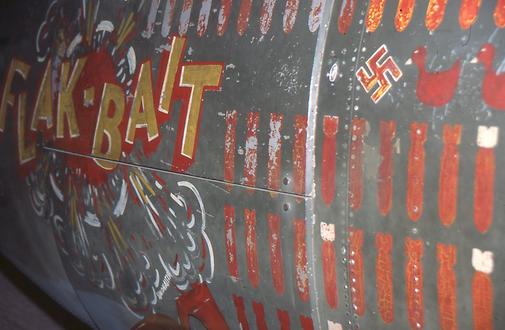
The opponents were German pilots who were not able to put an end to the disaster from the air despite astonishing numbers of downed planes, more succesful with their fighters than the Allies. The museum shows the flying aces on both sides in a well balanced way. The presentation of the events of the Second World War takes place in a very reserved and historically correct manner.


The standard fighter of the German Airforce was the Messerschmitt Bf 109, known as Me 109. The 33,000 planes constructed beat in number any other model. It was used as an interceptor, fighter bomber, night fighter and even reconnaissance aircraft. However, they were not able to decide the "Battle of Britain" of 1940 in their favour.

The technically most advanced combat aircraft of its time was the Me 262 of which the museum possesses a copy from the war booty of 1945. It was the first jet aircraft of the world built in serial production. Between 1943 and 1945, 1433 planes were built of which only 800 were deployed. Shortages of pilots, fuel and spare parts prevented air battles with this aircraft, classified as "retaliatory weapon". Initial strategic failure assessment as "Blitzbomber" could no longer compensate the later rapid success as interceptors of Allied bomber streams.
As early as 1938 the planning had begun at Messerschmitt, but it was only deployed in summer 1944 for the first time. The type "Sturmvogel" ("Thunderbird") with its two Jumo-004 jet engines reached a top speed of 870 km/h. With regard to the speed it was superior to all Allied aircrafts. In the final phase the production was done by forced labor in underground work. In February 1945, the highest monthly production was 295 pieces.

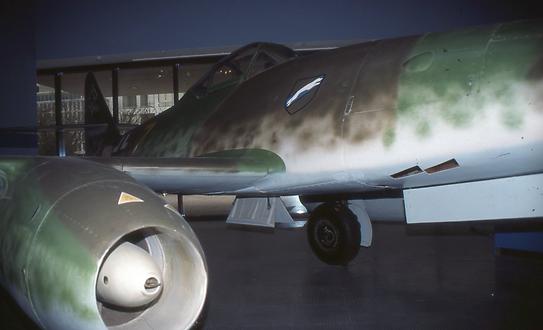


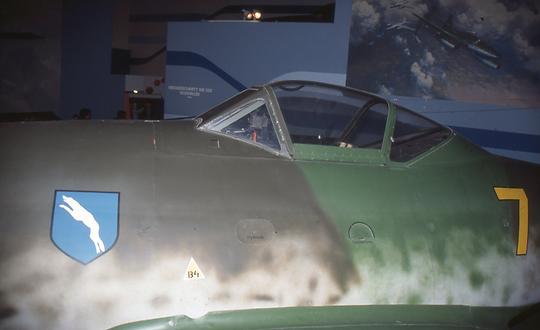



Although the Italian Air Force had little influence on the war events, it is mentioned and portrayed. As a tactical sign, the Italian aircrafts bore the three fascias of the political symbol of fascism.
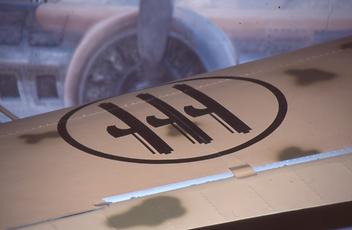

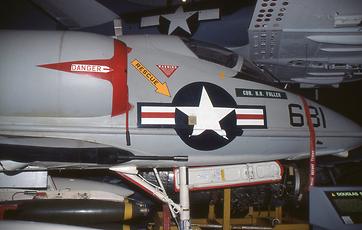
In the National Air and Space Museum particular emphasiss is given to military aircraft development of the Air Force.
Throwing weapons through the air, mankind had learned in early times. There was a long way from the stone which was thrown target-oriented up to the deadly rocket which comes from the stratosphere, and the targeting cruise missiles. A key invention was the combination of arrow and bow.
When the German Airforce was no longer able to master the air war and the Allied Forces won the air supremacy over Europe Germany put its hopes on so-called “retaliation weapons” to turn the tide of the war.

The Fiesler Fi 103 was named V1.It was the first cruise missile ever. From spring 1944 onwards it was used along the front. 12 000 of them were used mainly against London and the harbour of Antwerp. This war weapon was 7.7 m long, reaching a maximum speed of 576 km / h with its jet engine. Therefore, it was easily shot down by Allied pilots. The start took place via a mobile ramp. The head carried 847 kg explosives. Despite the damage it caused to humans the success of the V1 was relatively modest because it was predictable for the opponent.
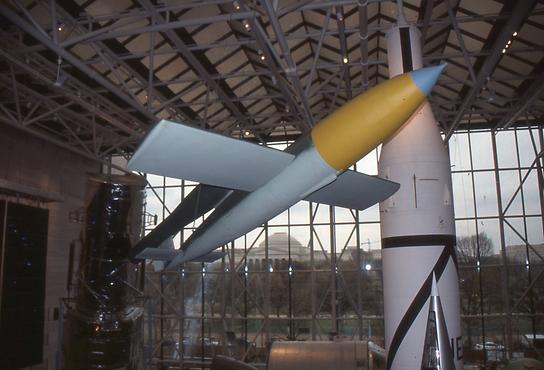
„Aggregat 4“, the first large rocket, also known as “V2” was far more dangerous. It became the terror of the Allied Forces, even though it did not contribute to the hoped-for turn of the war, to the “final victory”. With an overall flying altitude of 100 kilometres, it was the first human-constructed object that reached the limit of the world's atmosphere. Like the V1 it was constructed in the experimental area of the German Air Force in Peenemünde and got its drive by liquid fuel from ethanol und liquid oxygen which gave it a speed of 5500 km/h. V2 reached a distance of 300 km/h, it was controlled by a gyro compass which could be programmed prior to the start. Out of 5975 pieces built 1358 were fired on London and 1610 on Antwerp. Both cities were already occupied by the Allied Forces and used as a supply port. Some 8,000 people lost their lives. The explosive power was not much larger than that of V1. Towards the end of the war, the production was done by forced laborers and concentration camp prisoners below ground. About 20,000 of them died because of inhuman working conditions.
The leading rocket technician of the German Air Force was Wernher von Braun. Several V 2 missiles and he himself had fallen into the hands of the Americans at the end of the war. In the service of his “new partners” Wernher von Braun contributed to the construction of a rocket weapon which finally lead to the landing of men on the Moon and hopefully – forthcoming – on Mars.

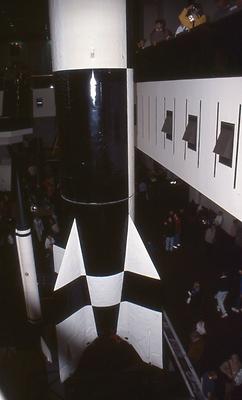




At the beginning of the space travel was the animal experiment. How would a living organism react to weightlessness and space radiation?
The US even compared the reach for the space, moon and planets with the conquest of the West of North America.
On July 21, 1969, the American astronauts Neil Armstrong and Edwin Aldrin were the first humans to step on the surface of our Earth satellite. For the USA the race with the Soviet Union was won in that conquest to land men on the moon.
To touch a moon-stone in the Air and Space Museum is a strange feeling which is hard to describe.

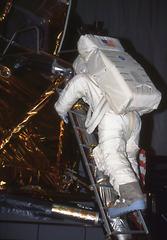

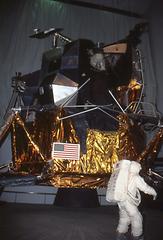

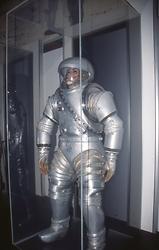


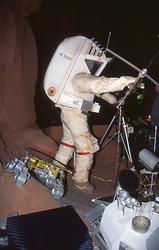

A space suit alone is not enough. Everything from clothes to food must meet the requirements of space and its weightlessness.
Space stations as near-earth fixed points are research and communication facilities which today are already operated by an international community. In the 1960s of the 20th century a space station was conceived. In 1968, this station served as model and fascinated people in the American feature film "2001 Odyssey in Space" by director Stanley Kubrick.
Here you see now the Soviet space station “Mir”:
Among the nations who were allowed to send an astronaut to the space station at the beginning of the millennium was Austria.
Before the space shuttle was available astronauts returned to earth in a capsule and “landed” in the sea when it was a US operation, or in central Asia if it was a Russian one.
The Command Module of the American Apollo 11 Mission:
With the space telescope named after the American astronomer Edwin Hubble, a telescope was installed in space which, with its 2.4 m measuring mirror, made a new dimension of astronomy possible, free of influence of the earth's atmosphere.
Probably, Mars will be the first planet of our solar system which will be visited by human beings. In 2001, it was considered a certainty. But we are still waiting...





After having visited the museum for a long time the visitor is full of impressions, and will take some rest and refreshments in the coffee shop of the museum.
National Museum of Natural History#
In its diversity hardly to be surpassed, the National Museum of Natural History, located at the National Mall, is one of the 19 museums of the Smithsonian Institution. It was already opened on 11 March 1910. In 2013 it was the most visited museum of the Smithsonian with 8 million visitors. The total area is truly American: out of 140,000 m² 30,000 m² are available for the permanent exhibition and for special exhibitions.
The principle of the representation of the activity of nature is closely connected to the culture of man. The same principal applies to another of the world's most famous natural history museums, the Natural History Museum in Vienna, where nature, prehistoric and prehistory of the people can be found together, and in the Museum of Ethnology in Vienna. Today, after dubious political decisions, the Museum of Ethnology has the trivial name World Museum. It was only recently that it was outsourced as a separate collection.
In Washington, there are 500 million plants, animals, fossils, minerals, rocks and meteorites. In many museums, stuffed animals on a pedestal are staring at visitors. Here in the Smithonian the animals are shown in sophisticated dioramas (showcases, in which scenes with model figures and landscapes are represented in front of a painted background).


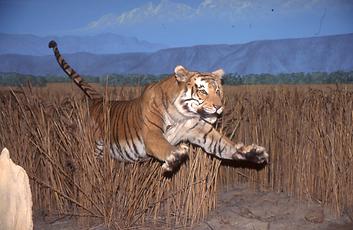


In the Museum of Natural History 185 professional scientists and scholars are working. This fact represents a world record. Sometimes you can even watch them work.
The artistic processing of works and objects that are hard to be depicted with originals is fascinating. Especially the reconstructions of animals from the earliest earth-historical epochs, from fish and dinosaurs, or from the ancestors of our mammals, which are often very strange, leads to admiration and invites you to study the dsiplays for a long time.
The depictions in the paintings which have been reconstructed range from the first organized forms of life up to the emergence of human tribes.
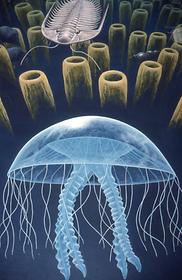




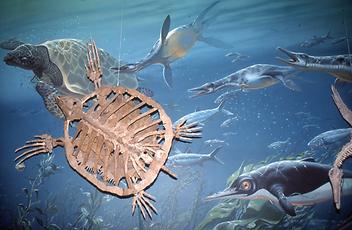


The ancestors of our today’s mammalians which had taken over the realm of terrestrial vertebrates step by step after the extinction of the dinosaurs leave a strange impression on the visitor.
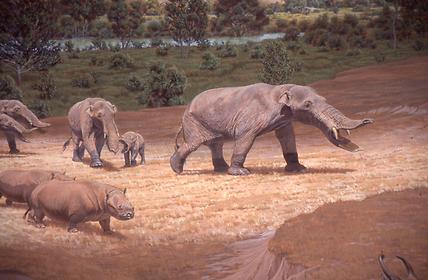




The depiction of foreign cultures is done successfully with very realistic means. Most clearly this is seen with the Indians whose population was reduced by the white man to a small minority. In dioramas one can observe how, by means of realistic dolls and original objects, the indigenous peoples have adapted in their way to the natural conditions and sutiable handicraft activities.
Eine sehr späte Form der Wahrnehmung und gleichzeitig ein virulentes Beispiel dafür, wie indigene Kulturen bis in die Gegenwart mit List, Tücke und Gewalt vernichtet werden! Blüht der Kultur des christlichen Abendlandes dieses Schicksal in gleicher Weise?
Indianervölker in ihrer physischen und kulturellen Vielfalt
A very late form of perception, and at the same time an example how indigenous cultures have been destroyed up to the present with cunning, malice and violence! Will the culture of the Christian Occident have the same destiny?
The next phots show indigenous peoples in their physical and cultural diversity.

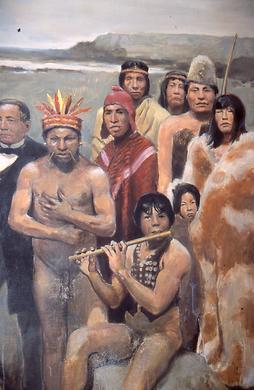


A rune-stone from Scandinavia points to the fact that Vikings had reached the American continent long before Columbus. However, their attempt to settle "Winland" on the north-east coast of North America was not a permanent success. Teh "why" is still not really clear.


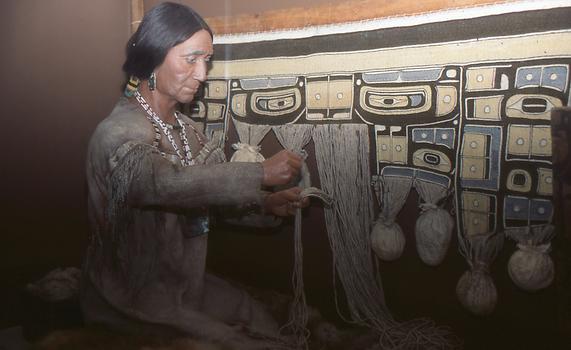

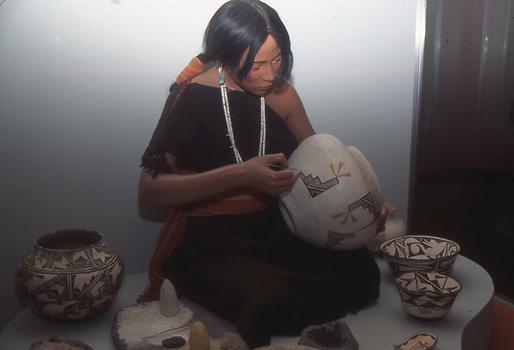


Hirshhorn Museum and Sculptural Garden #
The Hirshhorn Museum and Sculptural Garden at the Mall consists of two parts, a museum building in the contemporary style of the architecture of 1966 in which paintings and graphics are presented, and the sculpture garden which is open to the public and is also located directly at the National Mall.

This art museum of modern and contemporary art is also part of the Smithsonian Institution. In its more recent work it is dedicated to the fine arts of the United States after the Second World War.
In the American museum world, the huge collections of museums often go back to a noble founder. Joseph H. Hirshhorn (1899-1981) who had come from Latvia turned into a billionaire through his timely entry into the uranium mining industry. At first, he was interested in classical French Impressionism and the works of still living artists.
Later-on he got out of the uranium business and donated his collections to the community, without quitting collecting. The treasures which are shown in the museum building itself are almost unmistakable. In the freely accessible sculpture garden with its 16,000 m², sculptures are loosely presented in a coherent manner.
In a conscious contrast to the architecture of the National Mall, the architect Gordon Bunshaft created a building that could not be more in contrast to the others around.
The topic includes abstractions in large forms and figurative contemporary sculpture and its dissolution, as seen in the oeuvre of Henry Moore. Here you can enjoy a quiet view, because the Sculptural Garden is never overrun despite its location at the Mall. The broad public is still ambivalent about contemporary art and even to classical modernism.










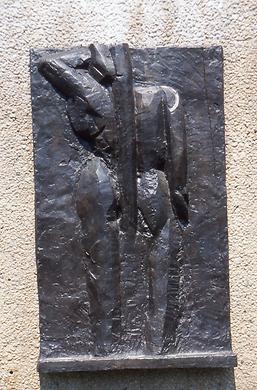
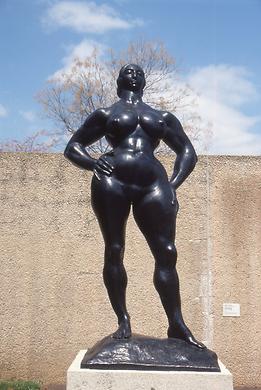


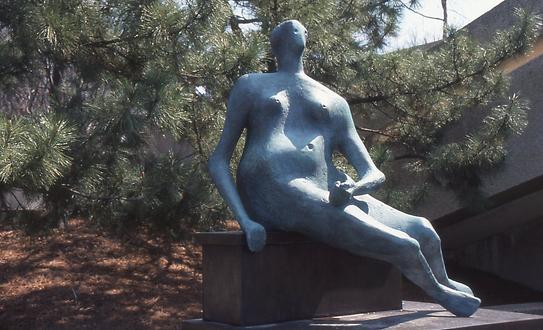





Auguste Rodin's sculpture group "The Citizens of Calais" was created in 1889. There is an excellent casting of this sculpture in the Hirshhorn Museum.


